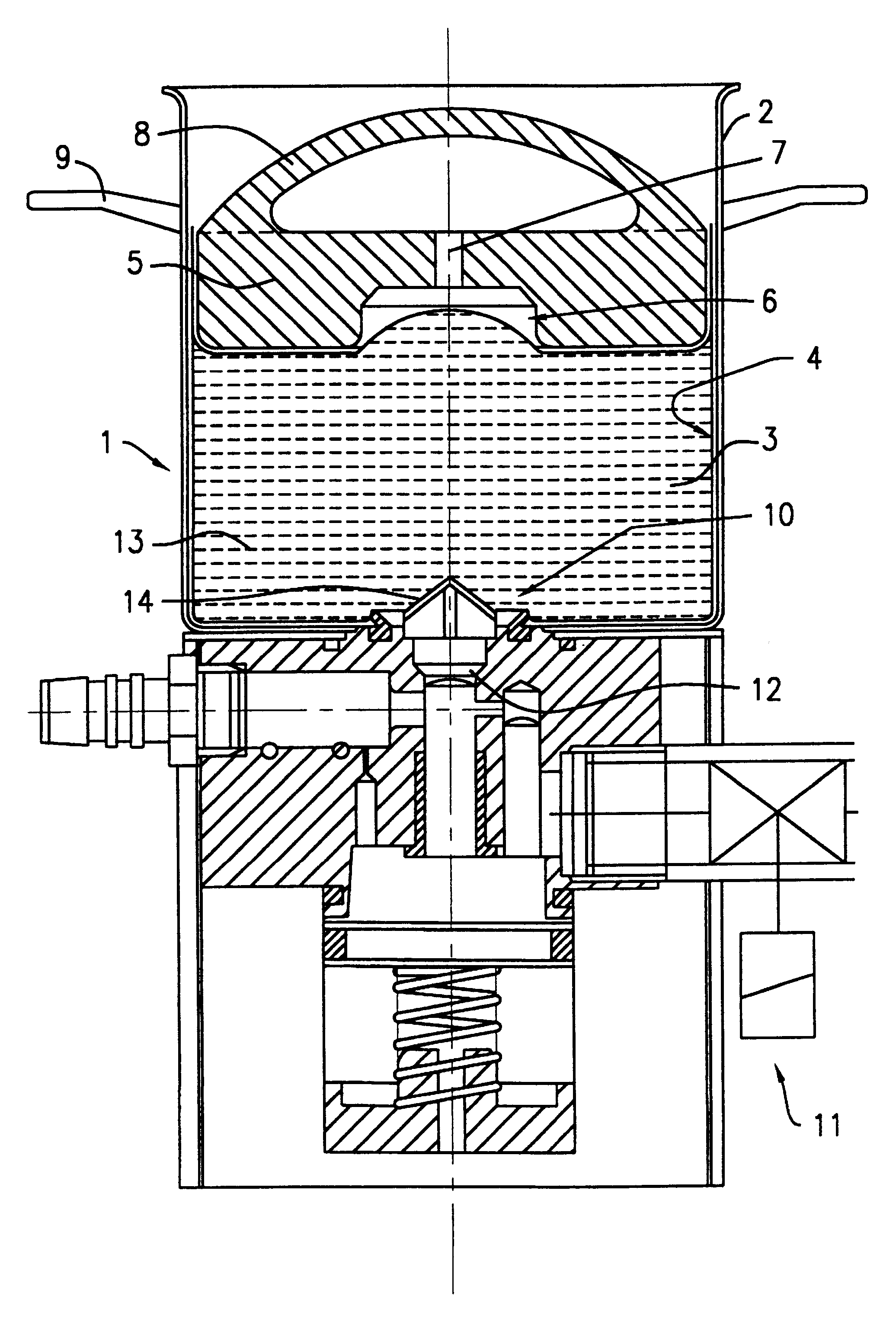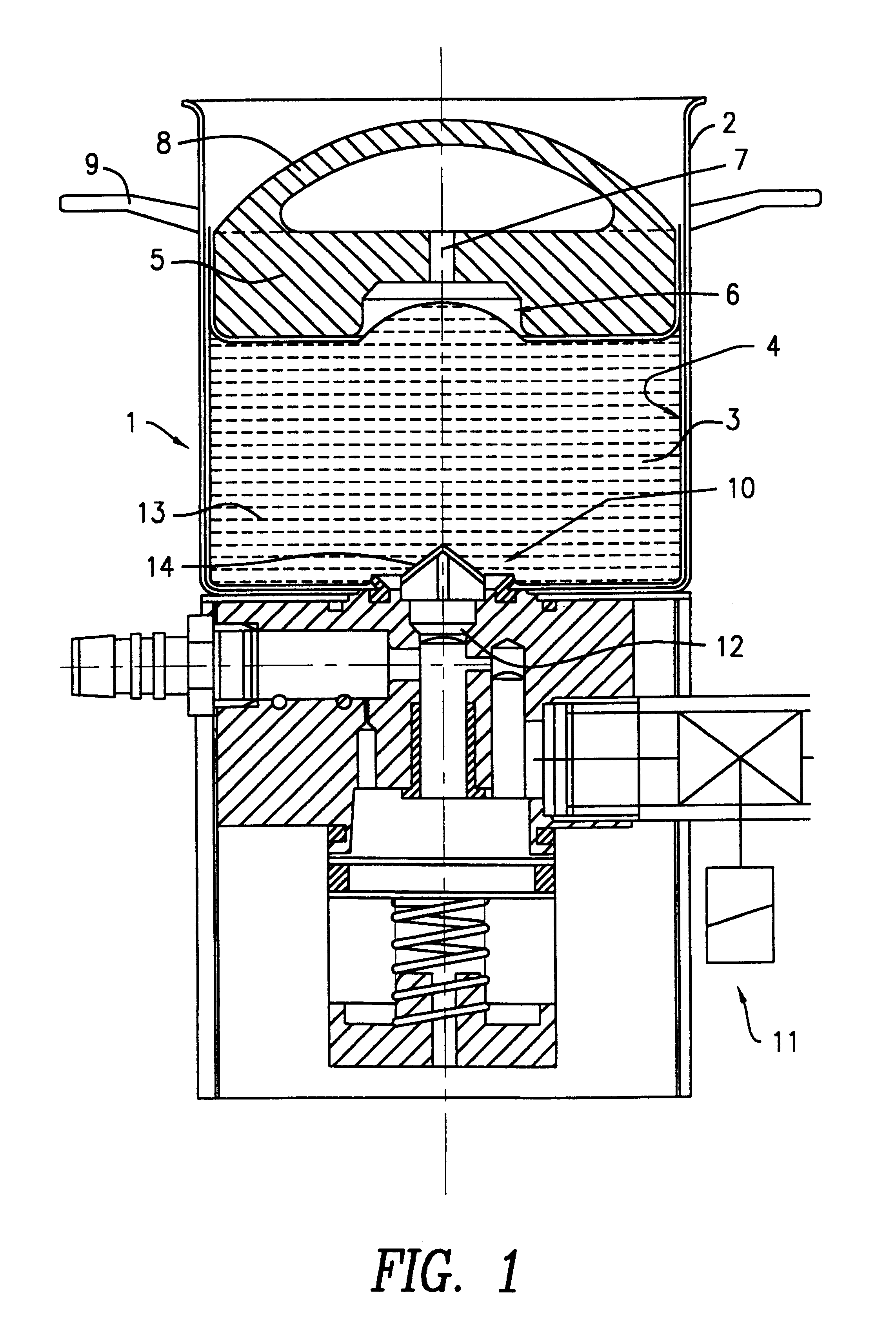Pot with a flexible storage barrel and follow-up plate
a technology of flexible storage and follow-up plates, which is applied in the direction of pliable tubular containers, liquid handling, instruments, etc., can solve the problems of occupying packaging space, reducing the effect of handling, and unable to avoid the use of organic solvents and/or hydrotropic additives. the effect of reducing the number of additives
- Summary
- Abstract
- Description
- Claims
- Application Information
AI Technical Summary
Benefits of technology
Problems solved by technology
Method used
Image
Examples
Embodiment Construction
The drawing shows an arrangement 1 in which a dimensionally stable pot 2 is placed on the frame of a dispenser 11. The pot 2 has a central opening 10 in its base through which parts of the dispenser 11 project into the pot 2 and which is positioned centrally over the access 12 of the dispenser 11. The pot 2 has handles 9 which facilitate its handling and exact alignment.
Accommodated in the pot in a flexible container 3 in which paste 13 is stored and which, appropriately, is also used for transporting the paste 13. The material of the wall 4 of the flexible container 3 consists of smooth, mostly transparent plastic. Placed on top of the container 3 is a follower plate 5. The bottom of the follower plate 5 is formed with a central recess 6 having a central bore 7. A handle 8 is provided on top of the follower plate 5.
The circumference of the follower plate 5 is selected so that the edge of the follower plate 5 and the inner wall of the pot 2 are separated by a gap which is capable of...
PUM
 Login to View More
Login to View More Abstract
Description
Claims
Application Information
 Login to View More
Login to View More - R&D
- Intellectual Property
- Life Sciences
- Materials
- Tech Scout
- Unparalleled Data Quality
- Higher Quality Content
- 60% Fewer Hallucinations
Browse by: Latest US Patents, China's latest patents, Technical Efficacy Thesaurus, Application Domain, Technology Topic, Popular Technical Reports.
© 2025 PatSnap. All rights reserved.Legal|Privacy policy|Modern Slavery Act Transparency Statement|Sitemap|About US| Contact US: help@patsnap.com


